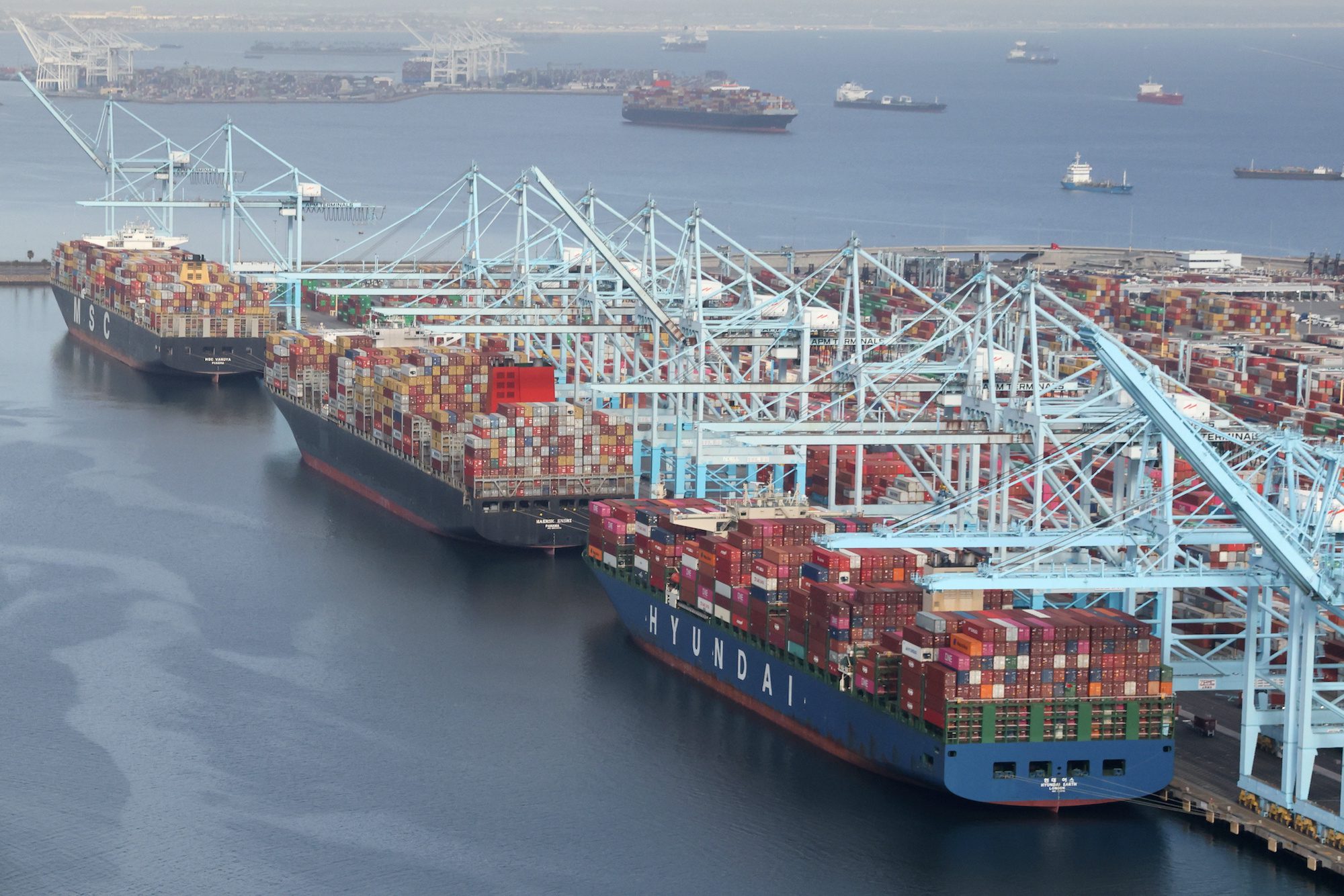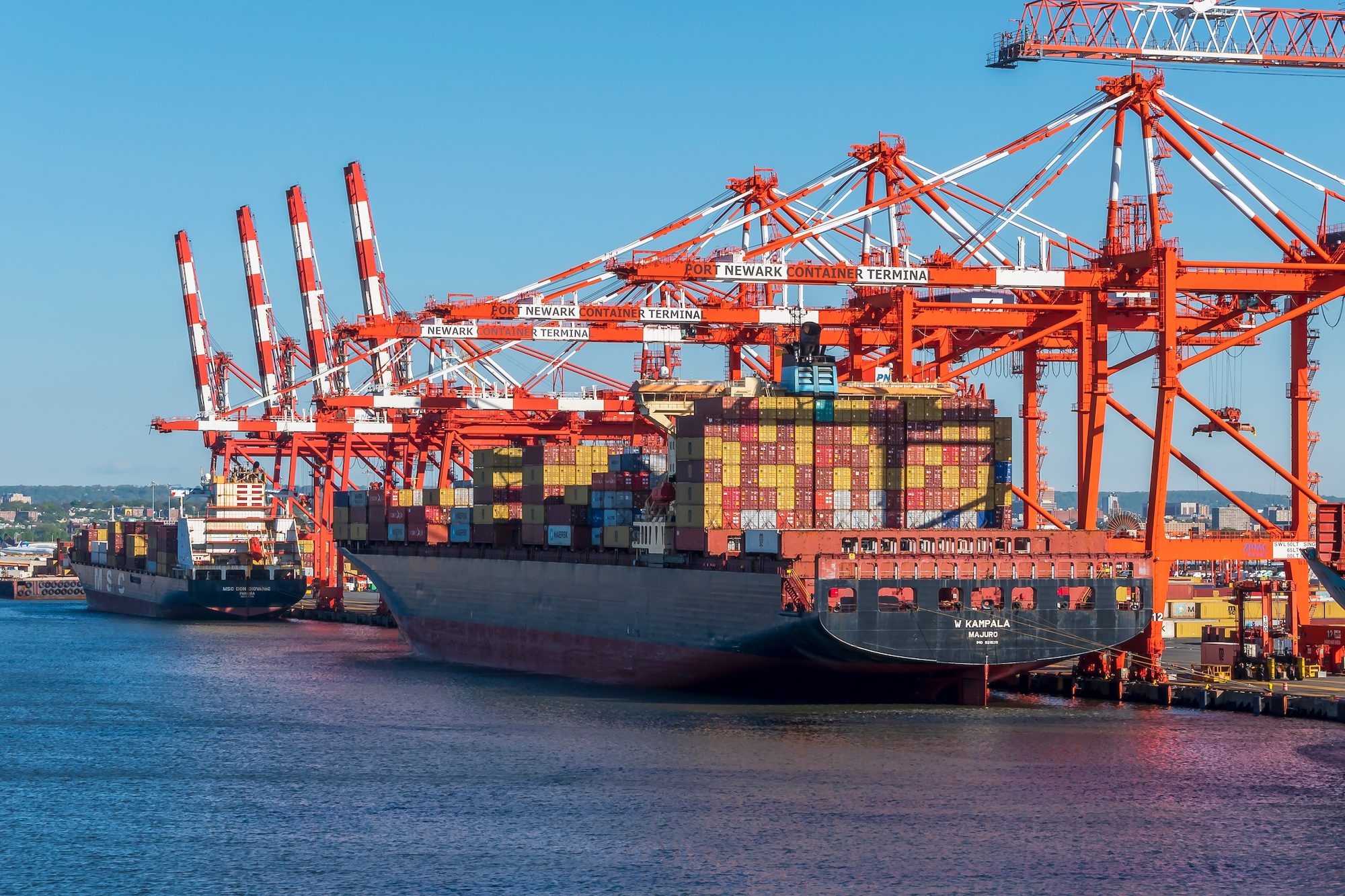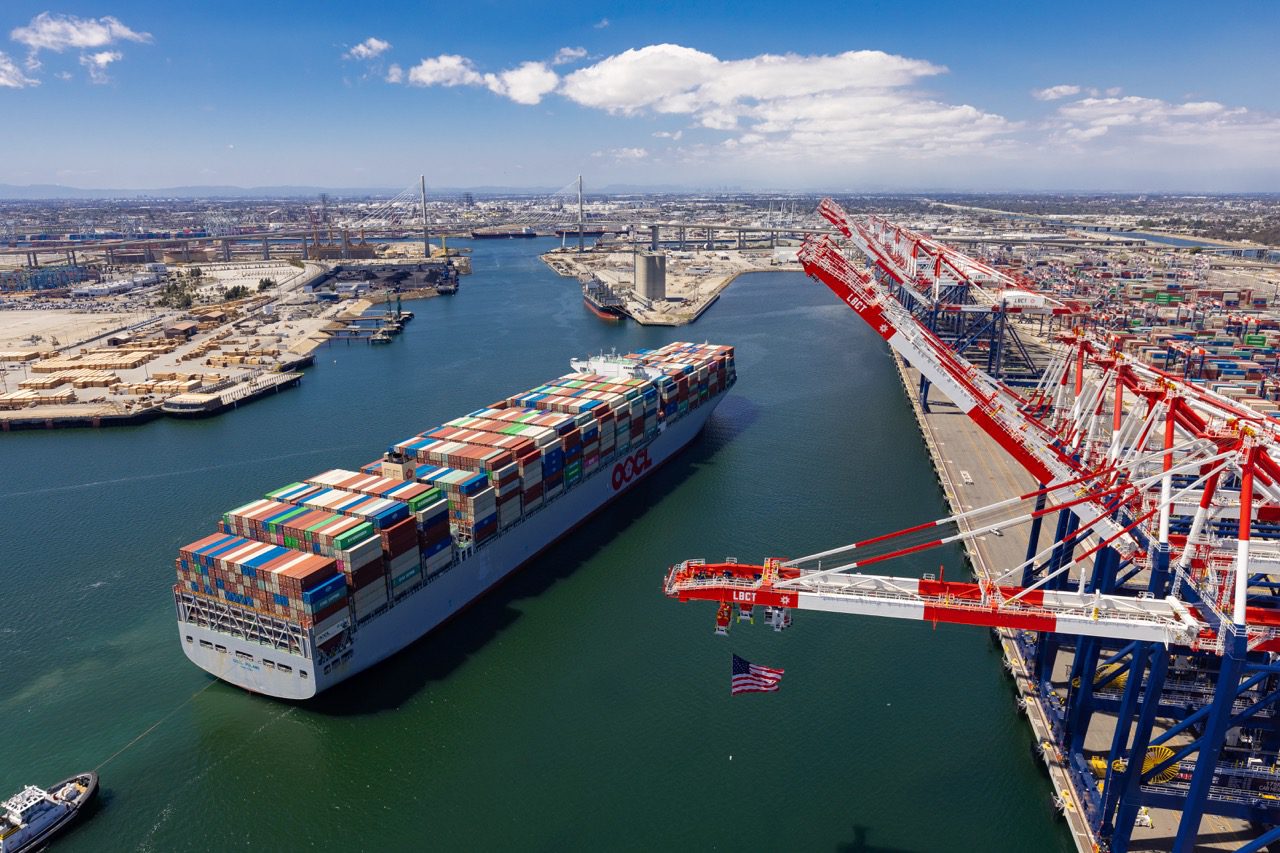By Ilena Peng (Bloomberg) —
Chinese cranes that load and unload containers from ships are the latest target of the Trump administration’s attempt to boost domestic manufacturing, even as no US industry for the equipment exists.
The US Trade Representative is proposing duties of up to 100% on Chinese ship-to-shore cranes, containers and other parts. Because no company currently makes such cranes in the US, it would take at least a decade to build up the industry, said Gene Seroka, executive director of the Port of Los Angeles.
Marine terminal operators could look to European and Japanese makers for new cranes, but there are “very slim choices” outside of China, Seroka said in an interview. “All this takes time,” he said, citing the need to train a workforce, invest in manufacturing locations, and rising costs for building materials like steel and aluminum that are also under tariffs.
It’s the latest example of how tariff policies threaten to upend a niche business that will leave customers in the US — already facing limited options — with even fewer choices. And because the proposal would impact the nation’s ports, it poses a broader risk to global supply chains, adding costs for marine terminal operators that may be passed along to cargo owners and ultimately to consumers.
While fees may not immediately impact operators because cranes can last about 20 years, “it’s about choice, price and opportunity to see more people in the marketplace,” Seroka said.
Ship-to-shore cranes are key to moving containers between trucks and railroads to ships, and vice versa. Among the top goods shipped into the US via containers are electric machinery, plastics and furniture, while wood pulp and oilseeds are outbound, according to the US Department of Transportation.
Chinese-made cranes, which can be serviced and programmed remotely, have raised national security concerns in the US, with the Biden administraion also proposing duties on the equipment. The moves under both administrations to expand domestic manufacturing are “all good,” but the issue is that there aren’t many companies in this space, Seroka said.
The American Association of Port Authorities said in a statement last week that it opposes the latest proposed taxes, and will instead support the creation of a production tax credit for US-made cargo-handling equipment.
“The administration must remember that there are currently no domestic manufacturers of ship-to-shore cranes,” Cary Davis, the industry group’s president, said in the statement. “High tariffs on ship-to-shore cranes, without affordable alternatives from either domestic or allied sources, function as a crippling tax on port development and seriously threaten our nation’s ability to expand cargo movement.”
The US Trade Representative is scheduled to hold a public hearing on the proposed actions on May 19.
The latest USTR proposal from Thursday did pare back the extent of earlier planned fees on Chinese vessels, but it’s another cost that will be passed on in the supply chain, Seroka added.
The Port of Los Angeles, which is the nation’s biggest in terms of containerized imports, has about 40 to 45 Chinese-made cranes out of 86 in total, according to Seroka. Maintaining Chinese-built cranes already in the US would also become more expensive.
Cargo-handling equipment such as fork lifts is less exposed to fees as there are more manufacturers of those goods both in the US and abroad. Roughly a quarter of the port’s cargo-handling equipment is made in China, Seroka said.
There are opportunities for growth, including US-based companies providing more maintenance work on cranes. In the short-term, however, the overall transportation cost of goods coming into the US would rise, said William Brauner, vice president of operations at custom broker and freight forwarder Brauner International.
“If you’re operating a terminal and you’ve got to purchase these cranes, you’re going to find a way to build it into the cost of moving goods through your facility,” Brauner said. “The consumer, at the end of the day, ends up being the one that’s going to bear that cost.”
© 2025 Bloomberg L.P.

 Join The Club
Join The Club











